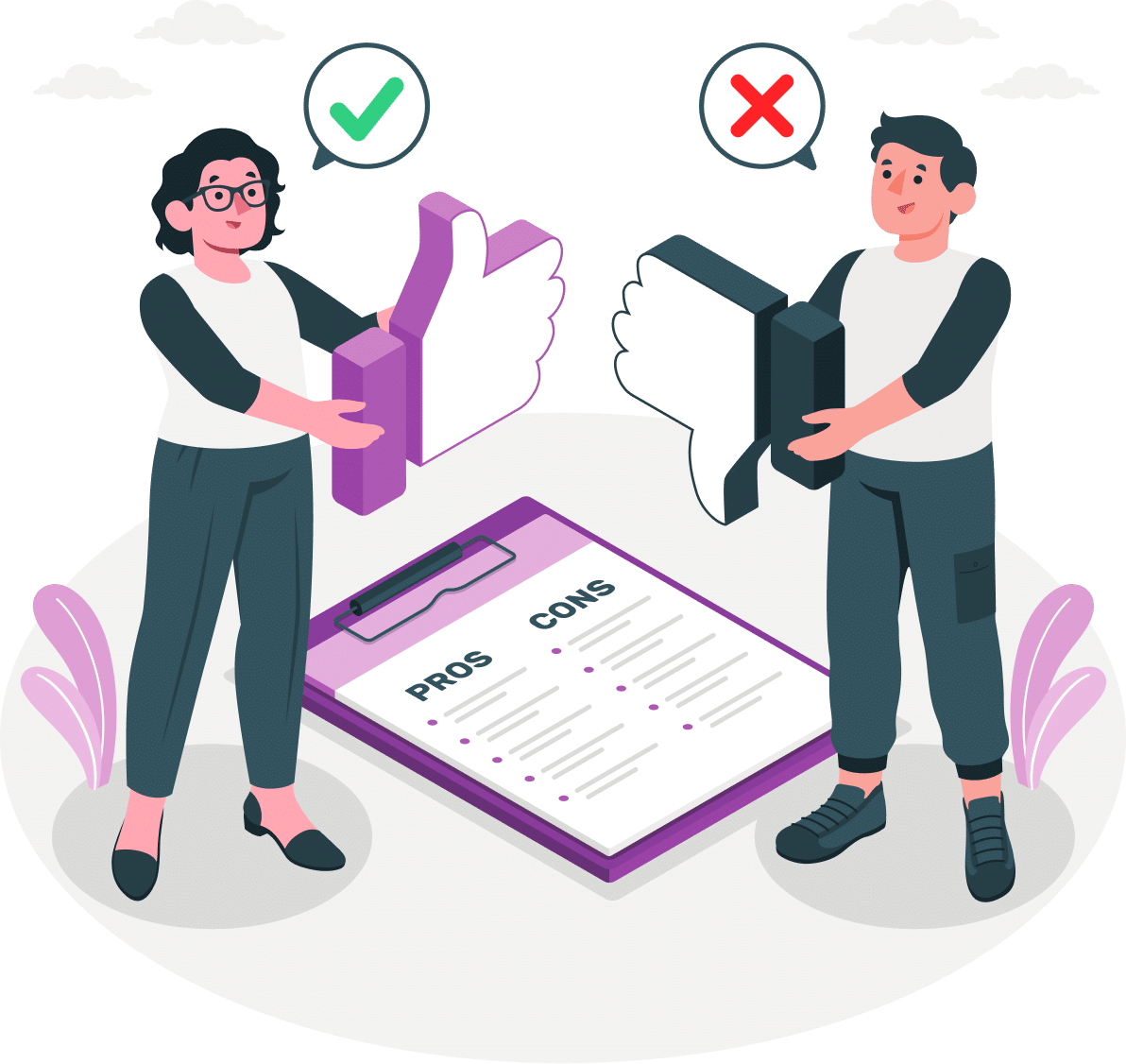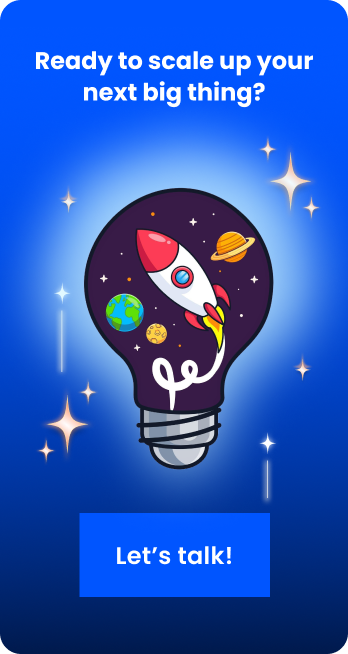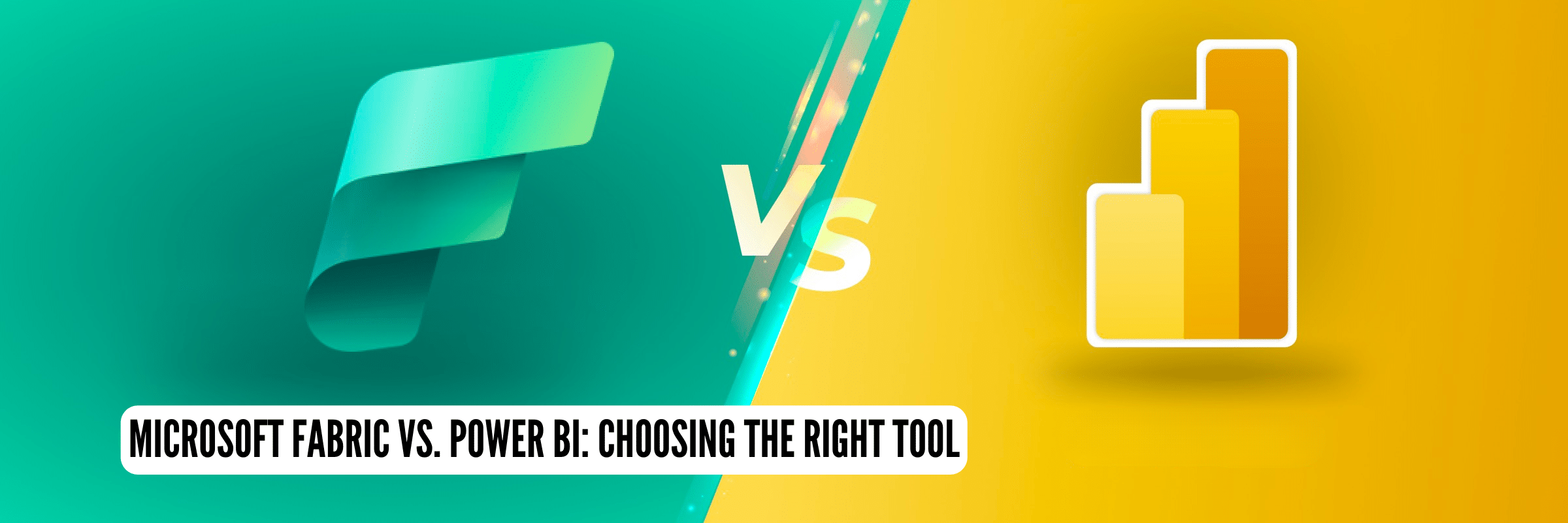
Microsoft Fabric vs. Power BI: Choosing the Right Tool
Tarsem Singh | July 17, 2024 , 13 min read
Table Of Content
Assumptions should have no place in business decisions, hunches could find some room though. Assumptions often are incorrect or misleading, and could be disastrous for a business’s growth.
Evidence based thinking and decisions go further along, so why assume when you can make decisions based on facts?
90% of organizations feel that data is increasingly critical to their business, but just 25% of them feel that their decisions are driven by data. Data-driven decisions should be made a norm. We live in a world with abundant data and tools to collect such data.
Even better, if you cannot make sense of your data, there are tools to analyze such datasets that can help you make data-driven decisions.
Two of such tools are Microsoft Fabric and Power BI. Microsoft introduced these tools to help businesses understand and make decisions based on data for business growth.
Read on to learn more about how you can choose the right tool to make these data-backed decisions.
Key Takeaways
- Microsoft Fabric is an all-in-one data analytics platform that integrates multiple tools for real-time insights, data storage, AI-driven analysis, and seamless data migration
- Power BI is a business intelligence tool focused on data visualization, allowing users to create interactive reports and dashboards without coding.
- Fabric is designed for big data processing and integration, while Power BI excels at creating visual analytics for business insights.
- Power BI is best for businesses needing cost-effective, user-friendly data visualization.
- Microsoft Fabric is suited for enterprises handling large data volumes and advanced analytics, requiring real-time processing and AI-powered insights
- Power BI is ideal for interactive reporting and easy collaboration, while Microsoft Fabric is better for long-term, large-scale data engineering and analytics.
Microsoft Fabric vs Power BI: Overview in Brief
- Microsoft Fabric vs Power BI: Overview in Brief
- What is Microsoft Fabric?
- What is Power BI?
- Microsoft Fiber vs Microsoft Power BI: Key Differences
- When Should I Use Power BI Over Microsoft Fabric?
- How To Choose The Right Tool For Your Needs?
- Conclusion
- Frequently Asked Questions
- Similar Comparison Articles Around Power BI
The main difference between Microsoft Fabric and Power BI is that Microsoft Fabric is designed for large-scale data processing, integration, and management, making it ideal for complex data workflows, while Power BI focuses on data visualization and creating interactive reports for easier data interpretation.
To compare both platforms so that you can make an easy choice, we need to explain in detail what these tools can do and the features they offer. Let’s begin with Microsoft Fabric.
What is Microsoft Fabric?
Microsoft Fabric is a complete, easy-to-use platform designed for businesses and data experts to analyze and understand data, see and act on data in real time, store data securely, and migrate data from one platform to another.
To simplify it, Microsoft Fabric combines different tools and technologies into one simple solution, making it easier for businesses to manage and use their data effectively.
Key Features
1. A Complete Analytics Platform
Each analytics project needs different systems that usually require input from various vendors, making integration difficult, fragile, and expensive.
Microsoft Fabric solves this problem by providing a single solution with a consistent user interface, architecture, and all the tools needed to gather insights from data and present them effectively.
2. Lake-Centric And Open
Data lakes can be messy and hard to manage, often leading to data duplication and being stuck with specific vendors due to different data formats.
Microsoft Fabric solves this with OneLake, a built-in, multi-cloud data lake. Just like Microsoft 365 apps connect to OneDrive, all Fabric’s tools connect to OneLake.
OneLake eliminates disorganized data storage by offering a single, unified storage space for the whole team, making it easy to find and share data.
3. AI Integration from OpenAI
Microsoft Fabric integrates Azure’s OpenAI service to help users make the most of their data. This allows developers to use AI to analyze customer data and help business users find insights.
With Copilot integrated into every part of Microsoft Fabric, users can use simple conversational language to:
- Build machine learning models
- Create data flows and pipelines
- Generate code and functions
- Visualize results
Users can also create custom AI experiences using their data and Azure OpenAI models and publish them as plug-ins.
4. Empowerment for All Business Users
Microsoft Fabric makes data analytics easy for everyone, helping to create a data-driven culture in organizations. It’s integrated with everyday Microsoft 365 applications, allowing users to turn these apps into key tools for discovering and using data insights.
5. Cost Reduction Through Unified Capacities
Using different products from multiple vendors often leads to wasted computing resources because each system has its own capacity that can’t be shared.
Microsoft Fabric solves this by allowing you to buy a single pool of computing power for all your needs, like data integration and data science. This way, unused resources can be used by other tasks, reducing overall costs and simplifying management.
What is Power BI?
Power BI is a tool organizations can use to turn raw data from various data sources into useful information. It creates data visualizations and reports, helping people understand their data better with a powerful yet easy-to-use interface. It can be used to highlight essential metrics to give users valuable insights.
Power BI consists of two main parts:
- Power BI Desktop: A free desktop app for creating reports and analyzing data.
- Power BI Service: A cloud-based version for sharing and distributing reports within an organization.
Teams typically use Power BI Desktop to build reports and Power BI Service to share them. There’s also a paid Power BI Pro version that includes collaboration features, a mobile app, and more sharing options.
Key Features
1. Extract Data Insights with No Coding Skills Required
You can create data visuals and analyses without prior programming knowledge with its drag-and-drop interface. This helps you handle complex data tasks like trend analysis and statistical summaries. Power BI is made easy for everyone.
Power BI also integrates with Microsoft apps like Teams, Excel, and PowerPoint, making it simple to include data insights into your current workflows.
2. Democratize Data Insights with Dashboards
Dashboards are a common BI tool that visually present data from multiple sources using charts and graphs, helping to understand company processes and strategies.
It connects to various data sources like SQL Server, Excel, and Amazon Redshift, enriching dashboards with comprehensive data from across the organization.
These dashboards help align strategies, uncover insights, and speed up decision-making.
3. Tell Data Stories with Advanced Visualizations
Telling stories with data is crucial due to the large amounts of data generated. Dashboards show what is happening with data, while data stories explain why trends occur. Power BI helps users create visual stories by linking visualizations, including dashboards, to explain data insights and show the impact of decisions.
Looking to outsource your Power BI efforts, choose Scaleupally as your partner for comprehensive Power BI development services. Unlock the full potential of this powerful data analysis tool today!
Microsoft Fiber vs Microsoft Power BI: Key Differences
Although Power BI and Fabric both aim to empower businesses with data analytics, they differ in features, audience, and purpose.
Let’s explore the key differences between Microsoft Fabric and Power BI.
1. Purpose
- Microsoft Fabric: For large-scale data processing, integration, and management, ideal for big data and complex workflows.
- Power BI: For data visualization and business intelligence, perfect for creating interactive reports and dashboards.
2. Scalability
- Microsoft Fabric: Highly scalable for managing large datasets and advanced analytics.
- Power BI: Scales well for creating and sharing data visualizations at all organizational levels.
3. Integration
- Microsoft Fabric: Integrates with many data sources for a unified data environment.
- Power BI: Connects to various data sources, focusing on transforming data into visual insights.
4. User Focus
- Microsoft Fabric: For data engineers and analysts handling large data volumes.
- Power BI: For both technical and non-technical users to create and interpret data visualizations.
5. Functionality
- Microsoft Fabric: Offers tools for data processing, storage, and real-time analytics.
- Power BI: Focuses on creating customizable, interactive visualizations for easy sharing and collaboration.
When Should I Use Power BI Over Microsoft Fabric?
Choosing between Microsoft Fabric and Power BI depends on your business needs and data operations. Here are some scenarios where Power BI might be the better choice:
1. Integration with Microsoft Ecosystem
If your organization uses the Microsoft Ecosystem, Power BI integrates smoothly with Microsoft products like Excel, Azure, and Dynamics 365, making it easy to import data, automate workflows, and enhance your data analysis.
2. Data Visualization
Power BI offers interactive and visually appealing visualizations. It features drag-and-drop functionality, allowing even new users to customize reports easily. Users can apply filters and interact with the app directly. Administrators can also buy and download custom visuals from Microsoft Marketplace, including maps, charts, graphs, KPIs, and more.
3. Quick Insights
If you need quick insights without so many clicks, Power BI offers quick insights with real-time analytics and lets users ask questions in plain English to get instant visual answers. It also supports real-time data streams to monitor key metrics. Ask questions like, “How are sales trending this week?” in plain English. Power BI will instantly show a visual graph of current sales trends.
4. Collaboration With Team Members
Power BI makes it easy for teams to collaborate by supporting report and dashboard sharing, integrating with Microsoft Teams, and allowing annotations, alerts, and comments. If your organization has teams working simultaneously on a project, Power BI should be your choice.
5. Cost-Effectiveness
For organizations that don’t need heavy data processing and are on a budget, Power BI is a cost-effective option for creating and sharing visualizations. It offers free and scalable pricing options to fit different budgets.
How To Choose The Right Tool For Your Needs?
Choosing between Microsoft Fabric and Power BI depends on a lot of factors including but not limited to your business needs and data strategy. Here’s how you can pick the right tool:
1. Assess Your Data Volume and Complexity
- Microsoft Fabric: Best for large-scale data processing and complex data integration.
- Power BI: Ideal for visualizing and reporting on manageable data volumes.
2. Determine the Primary Use Case
- Microsoft Fabric: Suited for comprehensive data engineering and advanced analytics.
- Power BI: Great for data visualization, reporting, and quick insights.
3. Consider User Skill Levels
- Microsoft Fabric: Best for data engineers and IT professionals.
- Power BI: Accessible to both technical and non-technical users.
4. Evaluate Integration Needs
- Microsoft Fabric: Offers extensive integration with diverse data sources.
- Power BI: Good for transforming and visualizing data but with less focus on complex integrations.
5. Budget and Resources
- Microsoft Fabric: May require more investment for setup and skilled personnel.
- Power BI: More cost-effective for smaller projects focused on reporting and business intelligence.
6. Long-Term Goals
- Microsoft Fabric: Fits long-term needs for large-scale data management and advanced analytics.
- Power BI: Ideal for immediate data visualization and reporting needs.
Conclusion
After reading our blog, you’ve noticed that the difference between Microsoft Fabric and Power BI is clear. To summarize the points, Power BI is widely used for creating data visualizations and reports, making it a valuable tool across various industries while Microsoft Fabric on the other hand is a comprehensive platform that integrates multiple Azure tools and services helping businesses manage and analyze large datasets efficiently.
Whatever your choice is, we at ScaleupAlly can help you integrate these tools into your systems to manage and make sense of your data. Contact us now to get started.
Frequently Asked Questions
Q: What is one key difference between Power BI and Microsoft Fabric?
One key difference between Power BI and MS Fabric is that Power BI is used for data visualization and interactive reports, while Microsoft Fabric is used for large-scale data processing and integration.
Q: Which tool is better for complex data and advanced analytics?
Microsoft Fabric is better suited for complex data operations and advanced analytics, as it provides robust infrastructure and tools for handling large data volumes.
Q: Can I use both Microsoft Fabric and Power BI together?
Yes, you can use both of them together. Microsoft Fabric processes and integrates data, and Power BI visualizes and reports on it.
Similar Comparison Articles Around Power BI
Related Blogs
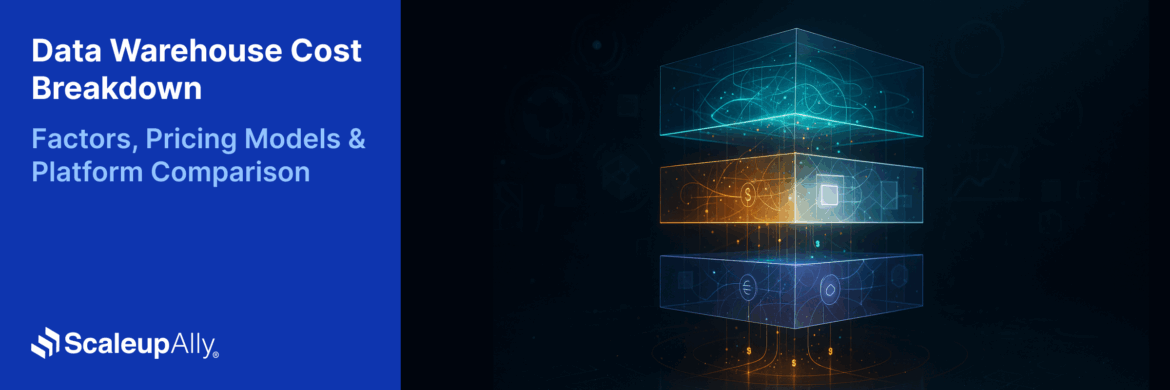
Data Warehouse Cost Breakdown: Factors, Pricing Models & Platform Comparison
Discover how much a data warehouse costs in 2025. Explore pricing models, key factors, and platform comparisons to plan your data budget effectively.
Tarsem Singh
Nov 6 ,
14 min read
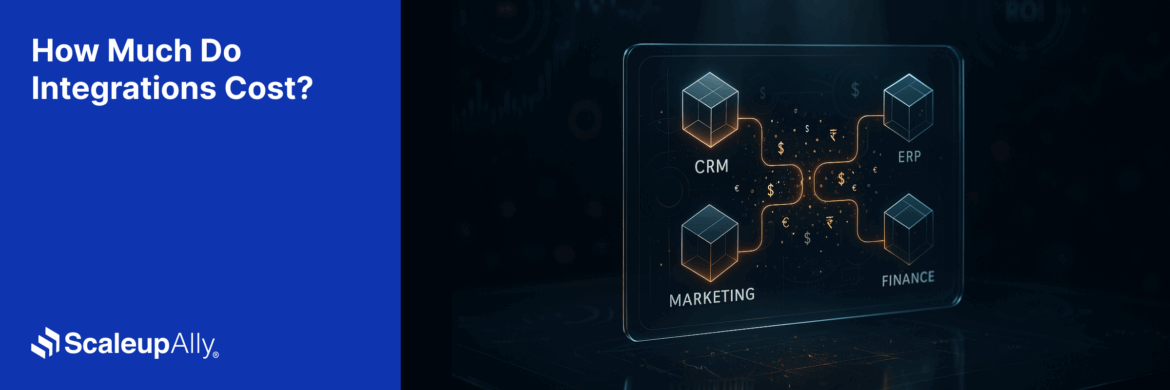
How Much Do Integrations Cost? [Pricing Breakdown & Key Insights]
Learn how much integrations cost, key factors influencing pricing, hidden expenses to avoid, and effective ways to reduce integration costs.
Tarsem Singh
Nov 6 ,
9 min read
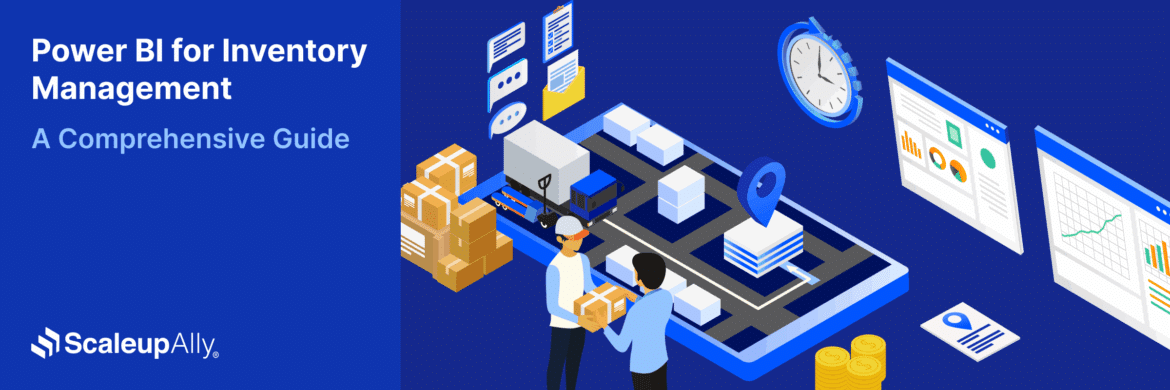
Power BI for Inventory Management: A Comprehensive Guide
Explore the hidden power of Power BI for inventory management and how it provides businesses with powerful analytics and visualization capabilities.
Tarsem Singh
Oct 8 ,
19 min read
